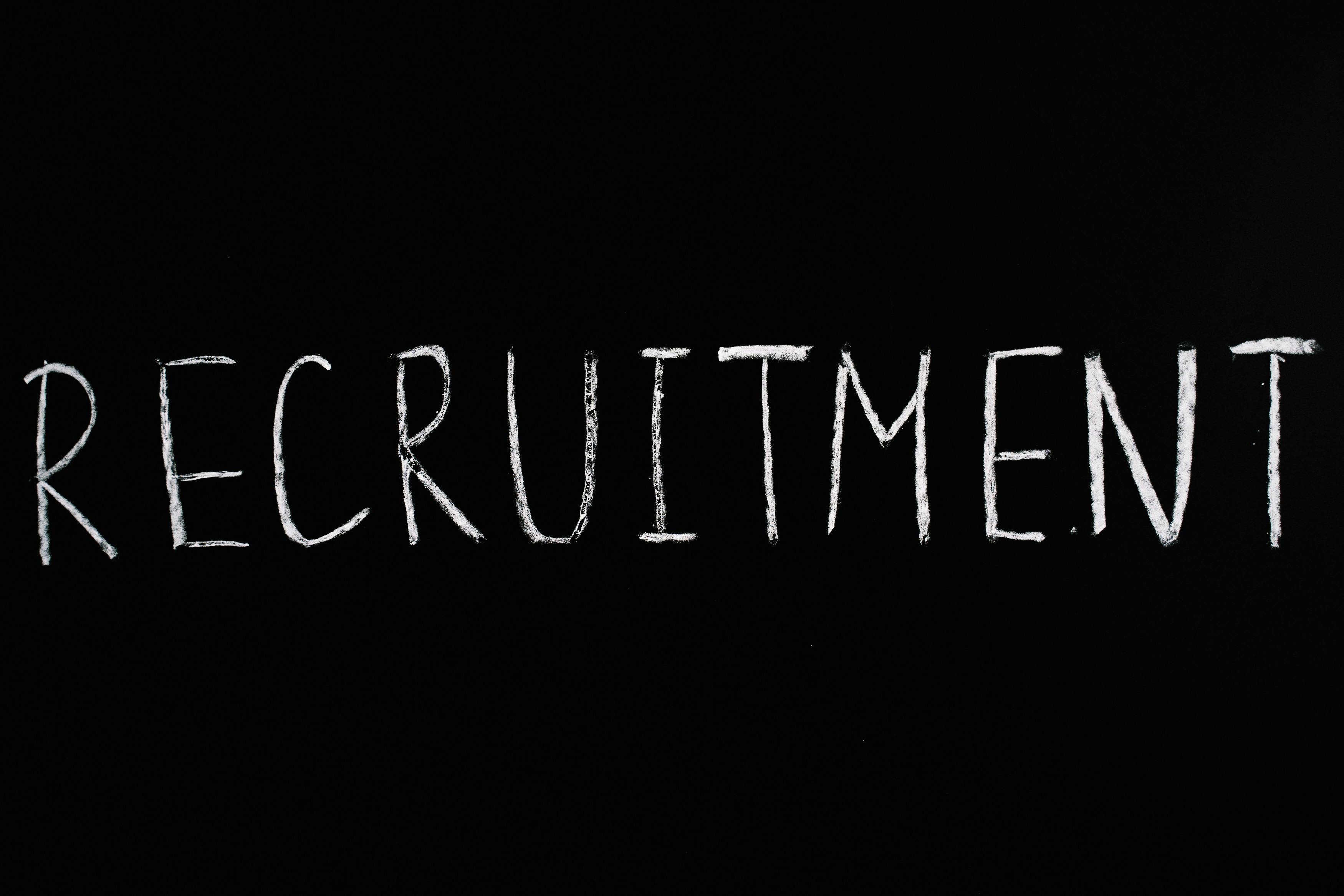Take a deeper dive into
how outsourcing firms work
Learn about Fullsight's new features and announcements, and be up-to-date on what our community has been saying, all-in-one place.
Community
What makes an ATS truly effective for global teams
How modern Applicant Tracking System platforms support AI recruitment at international scale
Global hiring has become the norm for fast-growing companies, especially in technology, IT outsourcing and IT consulting. Teams are now distributed across countries, time zones and cultures, yet recruitment leaders are still expected to deliver speed, consistency and quality. In this context, an effective Applicant Tracking System becomes a critical business tool rather than just an HR solution. An ATS designed for global teams must go far beyond basic applicant management. Studies consistently show that companies using advanced recruitment technology can improve hiring efficiency by around 30 percent thanks to automation, better collaboration and improved data visibility. For international organizations, this efficiency only works when the Applicant Tracking System is flexible, intelligent and scalable. Global compliance and localization One of the biggest challenges in global recruitment is regulatory compliance. Data protection laws, local labor regulations and privacy requirements vary significantly between regions. A truly effective ATS centralizes compliance while adapting to local hiring rules. Language localization, regional job boards and country-specific workflows are essential. Without these capabilities, global recruitment becomes slower, riskier and harder to manage. AI recruitment that works across borders AI recruitment is no longer optional. A large majority of recruiters report that artificial intelligence helps them save time and improve candidate screening. For global teams, AI-powered Applicant Tracking System platforms ensure consistent evaluation of candidates regardless of location. Automated CV parsing, skills matching and ranking help recruiters focus on high-value interactions instead of repetitive tasks. In IT outsourcing and IT consulting, where technical expertise is in high demand, AI recruitment allows companies to process large volumes of applications without losing accuracy or fairness. An effective ATS uses AI to support decision-making while keeping humans firmly in control. Integration with complex IT environments Global organizations depend on interconnected systems. An ATS must integrate seamlessly with HR platforms, payroll solutions and collaboration tools. In IT consulting environments, strong integrations reduce manual work and improve data reliability. For IT outsourcing companies managing high-volume recruitment, a connected Applicant Tracking System ensures smoother workflows and faster hiring cycles. When recruitment data flows easily across systems, organizations gain a clear and unified view of their global talent pipeline. Recruitment analytics for strategic impact Data-driven recruitment is essential for global success. Metrics such as time to hire, cost per hire and quality of hire must be tracked consistently across regions. An effective ATS provides real-time dashboards and actionable insights that help teams identify bottlenecks and optimize processes.In AI recruitment, high-quality data is the foundation of performance. A global Applicant Tracking System standardizes recruitment data, enabling better workforce planning and stronger alignment between hiring and business strategy. Consistent candidate experience worldwide Candidate experience plays a major role in employer branding. Research shows that more than half of candidates are more likely to accept a job offer after a positive recruitment experience. A global ATS must deliver clear communication, fast feedback and mobile-friendly applications across all regions. For IT consulting and IT outsourcing firms competing for scarce global talent, a strong candidate experience can be a decisive advantage. Fullsight is an Applicant Tracking System built specifically for modern global teams. He combines AI recruitment, advanced analytics and seamless integration to support companies operating in IT consulting and IT outsourcing environments. Fullsight helps organizations centralize recruitment while respecting local needs, turning hiring into a scalable and strategic process. For companies looking to attract global talent and improve recruitment performance, Fullsight is an ATS designed to deliver results.


Productivity
How to efficiently use Fullsight’s pipelines to improve hiring processes
Recruitment is one of the most critical aspects of business growth. Yet, many companies still struggle with slow, inefficient processes that frustrate both candidates and hiring managers. This is where an Applicant Tracking System (ATS) and advanced recruitment pipelines, like those offered by Fullsight, come into play. By structuring workflows and automating repetitive tasks, businesses can improve recruitment efficiency, enhance candidate experience, and support long-term productivity. Why pipelines matter in recruitment Pipelines in an ATS allow HR management teams to visualize every step of the recruitment process, from the first application to final onboarding. Instead of relying on scattered emails and manual tracking, pipelines create a structured workflow that allows hiring managers to move candidates between stages with clarity and precision. Research indicates that 94% of recruiters report that using an ATS has enhanced their hiring process. With the right pipeline design, companies not only reduce time-to-hire but also strengthen collaboration between HR, management, and IT consulting teams. Improving efficiency with Fullsight’s pipelines Fullsight’s pipelines are designed to make recruitment more transparent and effective. Each stage of the process - screening, interviews, technical assessments, and final decision - can be customized to fit business needs. This flexibility allows HR management teams to integrate IT outsourcing or IT consulting requirements directly into the pipeline, ensuring the right talent is matched to the right projects. Automation plays a key role. By setting automatic reminders, sending pre-built email templates, and tracking candidate progress in real time, Fullsight reduces the administrative workload of recruiters. This lets HR focus on meaningful interactions with candidates, which improves the overall candidate experience. Business benefits beyond recruitment Efficient recruitment is more than just faster hiring. It impacts overall business performance. A structured pipeline helps companies avoid hiring delays that can stall projects, particularly in industries where IT outsourcing is essential. Better management of candidate flow also means fewer missed opportunities, improved employer branding, and higher employee retention.According to LinkedIn’s Global Talent Trends report, companies that offer a smooth candidate experience are 70% more likely to retain top talent. This underlines how tools like Fullsight’s ATS pipelines are not just about recruitment - they are a strategic asset for business management and growth. By using Fullsight’s pipelines, businesses gain more than just recruitment software. They gain a partner that supports smarter HR management, improves efficiency across teams, and drives measurable business outcomes. If your company wants to optimize recruitment and benefit from structured, efficient pipelines, Fullsight is the solution to take your hiring process to the next level.

Community
Beyond recruitment: how HR analytics drive overall business performance
Human resources is no longer just a support function. In 2026, HR analytics plays a central role in shaping overall business performance, going far beyond recruitment. With the rise of the Applicant Tracking System, AI recruitment and advanced data platforms, companies are turning people data into a strategic asset that directly impacts productivity, profitability and long-term growth. Organisations that make extensive use of HR analytics are significantly more likely to outperform competitors in productivity and financial results. This shift positions HR as a strategic driver, using data to support decisions that influence the entire business, not just hiring outcomes. HR analytics as a business performance engine HR analytics connects workforce data with concrete business results. By analysing recruitment efficiency, employee performance, retention levels and skills gaps, leadership teams gain a clear understanding of how people-related decisions affect revenue, customer satisfaction and innovation capacity. A modern Applicant Tracking System plays a key role in this process. It collects structured recruitment data such as time to hire, quality of hire and candidate experience. When these insights are combined with AI recruitment capabilities, organisations can move from reactive hiring to predictive workforce planning, reducing costs and improving talent quality. From recruitment data to strategic workforce planning HR analytics transforms recruitment information into long-term workforce strategy. By linking ATS data with performance and engagement metrics, companies can identify which profiles generate the highest business value over time. This insight is especially relevant in environments that rely on IT outsourcing and IT consulting, where the availability and performance of specialised talent directly impact project success. Data-driven workforce planning allows organisations to decide when to hire internally, when to rely on IT outsourcing and how to structure IT consulting teams more efficiently. HR analytics reduces uncertainty, supports smarter investment in skills and ensures alignment between talent strategy and business objectives. AI recruitment and operational efficiency AI recruitment goes far beyond faster candidate screening. It improves operational efficiency across the organisation. By analysing historical recruitment data, performance trends and turnover patterns, AI models help predict hiring needs, reduce bias and improve role matching. When embedded within an Applicant Tracking System, AI recruitment tools automate repetitive tasks and free HR teams to focus on strategic initiatives. This enables HR to work more closely with finance and operations, using shared data insights to improve decision-making at every level. HR analytics and leadership decision making Today, executives increasingly rely on HR analytics to guide high impact decisions. Workforce cost forecasting, productivity analysis and scenario modelling are becoming standard inputs in leadership discussions. HR data now influences expansion plans, digital transformation and service delivery models, particularly in IT consulting and IT outsourcing contexts. Despite this growing importance, many organisations still struggle to fully leverage HR analytics. Those who succeed gain a measurable competitive advantage by aligning people strategy with business performance goals. Fullsight as the foundation of data-driven HR This is where Fullsight becomes essential. As a robust Applicant Tracking System, Fullsight enables organisations to capture, structure and analyse recruitment data with precision. He supports AI recruitment processes while integrating seamlessly into broader HR and business environments. By using Fullsight, companies gain more than an ATS. He becomes a strategic platform that connects recruitment, HR analytics and overall business performance. For organisations focused on smarter hiring, stronger IT consulting outcomes and more efficient IT outsourcing strategies, Fullsight provides the data-driven foundation needed to transform talent insights into sustained business results.

Community
The rise of hybrid recruitment: balancing remote and in-person hiring
In today’s rapidly evolving talent landscape, hybrid recruitment has emerged as a dominant model that effectively balances remote and in-person hiring. Companies across industries are redesigning their hiring strategy to attract top talent while adapting to new expectations around workplace flexibility. Hybrid recruitment isn’t just a buzz phrase — it’s reshaping how organizations find, screen and onboard candidates with help from powerful technology like Applicant Tracking System solutions and AI recruitment tools. Remote work isn’t disappearing — but hybrid work is becoming the new norm. Recent data shows that more than half of remote-capable employees operate in a hybrid environment, while a similar share prefer this flexible arrangement. For recruiters, this means reevaluating traditional processes that were once anchored in on-site interviews and office presence. Hybrid recruitment blends virtual screening with selective in-person evaluation, giving companies access to broader talent pools and candidates a more work-life balance. Technology plays an essential role in this transformation. Applicant Tracking System platforms are now a cornerstone of efficient, hybrid hiring strategies. Statistics indicate that nearly all large organizations — including most Fortune 500 companies — rely on an ATS to manage candidate pipelines and workflows. ATS solutions help streamline recruitment, centralize applications, and automate administrative tasks that would otherwise slow hybrid recruiting initiatives. Artificial intelligence continues to drive innovation in recruitment technology. Around 79% of organizations have integrated AI into their ATS platforms to enhance candidate screening and ranking, helping recruiters focus on strategic decisions rather than manual filtering. AI recruitment tools can reduce time-to-hire by automatically identifying qualified applicants and removing unqualified ones from the queue, improving efficiency and candidate experience alike. Hybrid recruitment also aligns with broader trends in IT outsourcing and IT consulting. These sectors require rapid access to niche specialists, often on a global scale. Using hybrid recruiting models supported by advanced ATS and AI recruitment systems enables firms to source remote talent quickly while still conducting in-person assessments when needed to ensure cultural fit and project alignment. In the competitive world of IT projects, speed and precision matter. The impact of hybrid recruitment isn’t limited to hiring speed. Companies with flexible work options see higher engagement and lower turnover, and job seekers increasingly prioritize hybrid roles when evaluating opportunities. Candidates frequently decline interviews or offers if flexibility is absent, highlighting the business advantage of hybrid hiring frameworks. In parallel, the Applicant Tracking System market is experiencing rapid growth, with its adoption driven by the need for scalable, cloud-based recruitment systems that support hybrid and remote hiring workflows. Organizations are increasingly prioritizing advanced analytics, video interview integration, and mobile-friendly interfaces as they build hybrid recruiting ecosystems that serve both candidates and hiring teams. For companies focused on IT outsourcing and IT consulting priorities, the synergy between hybrid recruitment and recruitment technology cannot be overstated. An ATS is not just a workflow tool — it’s a strategic asset that reduces hiring cycle times, improves candidate quality, and enhances workforce planning. Platforms like Fullsight’s Applicant Tracking System combine AI recruitment capabilities with robust applicant management, helping firms stay competitive in hybrid hiring landscapes while maximizing efficiency and reach. By embracing hybrid recruitment and leveraging modern ATS and AI recruitment technologies, businesses can attract qualified talent, streamline hiring operations, and remain agile in a talent market defined by flexibility and innovation.

Community
Reducing time to hire without sacrificing quality
Reducing time to hire has become a strategic priority for organizations competing for scarce talent. In technology-driven markets, long hiring cycles often mean losing top candidates to faster competitors. At the same time, rushing recruitment decisions can compromise quality and increase turnover. The challenge for modern HR teams is clear. How can companies reduce time to hire while maintaining high hiring standards?The average time to hire across industries is over forty days, and for IT roles, it can be significantly longer. Every additional day in the recruitment process increases costs and reduces candidate engagement. This is where digital transformation, especially through an Applicant Tracking System and AI recruitment tools, becomes essential. Why time to hire matters more than everLong hiring processes impact more than just HR metrics. They affect productivity, employer brand, and revenue. LinkedIn reports that top candidates are often off the market within ten days. If your recruitment workflow depends on manual screening, fragmented tools, or external spreadsheets, delays are inevitable.An Applicant Tracking System centralizes candidate data, automates communication, and provides visibility across the entire hiring pipeline. When combined with AI recruitment capabilities, it enables faster screening and smarter shortlisting without lowering quality thresholds. Using AI recruitment to protect qualityAI recruitment is not about replacing recruiters. It is about enhancing decision-making. Modern AI models analyze CVs, skills, and experience against job requirements, highlighting the most relevant profiles in seconds. This significantly reduces the time spent on initial screening while ensuring objective and consistent evaluation.Companies using AI-driven recruitment technology improve hiring efficiency by more than thirty percent. These tools also help reduce unconscious bias by focusing on skills and experience rather than subjective criteria. The role of IT outsourcing and IT consultingMany organizations struggle to optimize recruitment systems internally due to limited technical resources. This is where IT outsourcing and IT consulting add value. By partnering with specialized providers, companies can implement and customize an Applicant Tracking System faster and more effectively.IT consulting ensures that recruitment platforms integrate smoothly with existing HR and enterprise systems. IT outsourcing teams can handle maintenance, updates, and scalability, allowing HR teams to focus on strategic hiring rather than technical complexity. Building a faster and smarter hiring workflowReducing time to hire without sacrificing quality requires a holistic approach. Clear job definitions, standardized evaluation criteria, and automated workflows are just as important as advanced technology. An Applicant Tracking System acts as the backbone of this ecosystem, connecting recruiters, hiring managers, and candidates in real time.AI recruitment tools continuously learn from hiring outcomes, improving recommendations over time. When supported by IT consulting expertise and scalable IT outsourcing models, companies can adapt quickly to changing hiring needs while maintaining consistency and compliance. In this context, Fullsight plays a central role. As an Applicant Tracking System designed for modern recruitment challenges, Fullsight helps organizations reduce time to hire while preserving hiring quality. He centralizes candidate management, leverages AI recruitment to accelerate screening, and integrates seamlessly through IT consulting and IT outsourcing frameworks. For companies looking to attract top talent faster and smarter, Fullsight offers a practical and scalable foundation for sustainable recruitment performance.

Community
How to align recruitment data with business strategy
In a competitive market where talent is the main differentiator, companies can no longer rely on intuition to hire. The integration between recruitment data and business strategy has become essential for sustainable growth. Tools such as an Applicant Tracking System and AI recruitment platforms are transforming how organisations analyse performance, understand bottlenecks, and predict hiring needs with precision. Organisations that use advanced analytics in HR improve decision-making by up to 25%. These numbers show how crucial it is to bring structured data into recruitment. An ATS offers visibility into the entire talent pipeline and provides metrics such as time to hire, cost per hire, and candidate conversion rate. These indicators help leaders translate recruitment performance into real business outcomes.AI recruitment is also redefining efficiency. Machine learning algorithms can screen CVs, classify skills, and identify the right profiles faster than traditional manual methods. Automation can reduce administrative HR tasks by 30%, freeing teams to focus on strategic activities like workforce planning and strengthening the employer brand.The connection between recruitment data and business goals becomes even more relevant in IT outsourcing and IT consulting. These sectors face constant changes in demand, requiring a precise understanding of the skills the market needs and the delivery capacity of technical teams. With the right data, companies can anticipate talent shortages, optimise project timelines, and avoid delays that affect revenue. When recruitment metrics reflect strategic priorities, organisations gain the ability to forecast hiring needs, prioritise roles with higher business impact, and adjust investment in sourcing channels according to actual performance. This alignment increases competitiveness and ensures a more agile, resilient, and data-driven operation. Fullsight fits exactly into this context. He is an Applicant Tracking System designed to centralise information, automate processes, and deliver intelligent reports that support strategic hiring decisions. With AI-powered functionalities and an interface accessible to any team, Fullsight helps companies transform recruitment data into measurable business value. Discover how he can elevate your strategy at fullsight.io.

Community
From data to decision: the power of an ATS in modern businesses
In today’s fast-paced business world, leveraging data is no longer an advantage, it is a necessity. For firms working in IT outsourcing or IT consulting, managing talent efficiently can make or break project delivery. That’s why an Applicant Tracking System, or ATS, has emerged as a backbone for modern recruitment strategies. Why an Applicant Tracking System mattersAn ATS transforms the chaotic flood of applications into organized, actionable data. Rather than sifting through dozens or hundreds of CVs manually, a time-consuming and error-prone process, recruiters can rely on structured candidate databases, automatic resume parsing, and clear pipelines. With so many companies embracing ATS, it has effectively become a standard best practice. The data-driven benefits: speed, cost, quality Implementing a modern ATS leads to measurable improvements across the hiring process. Key benefits include:Faster hiring cycles: Many organizations report reduction in time-to-hire after ATS implementation.Lower recruitment costs: Automation and streamlined processes decrease cost-per-hire.Improved candidate quality: AI-driven screening tools can help shortlist candidates whose skills and experience align with job requirements — boosting quality of shortlisted candidates.Better scalability: An ATS enables companies, including those in IT outsourcing and IT consulting, to handle high application volume and ramp up hiring quickly when neededMoreover, among organizations that moved to data-driven recruitment, many report that hiring outcomes improved. The role of AI recruitment The modern ATS often comes with AI-powered capabilities. With AI recruitment, recruiters can go beyond manual filtering and benefit from features like resume parsing, semantic matching, predictive analytics, and automated scheduling. These innovations dramatically improve efficiency. For instance, AI-enhanced ATS tools may reduce the time-to-hire by 50 % compared with traditional hiring methods. In industries such as IT outsourcing and IT consulting, where projects demand highly specialized talent and timelines are tight, such efficiency gains can be game-changing. By combining data collection, AI-powered screening, and analytics, businesses make more informed decisions and move faster from candidate application to onboarding. From data to insight: enabling smarter decisions An advanced ATS does more than store CVs. It produces data: how many applied, how many passed each stage, time-to-hire, source channels, candidate drop-off, even diversity or skills-match metrics. These analytics give HR teams and business leaders the ability to refine sourcing strategies, spot bottlenecks, and continuously improve recruitment performance. For example, tracking metrics such as interview-to-offer ratio or candidate source efficiency can guide where to invest recruiting efforts, whether that’s job boards, referrals, or partnerships. This kind of insight is critical for IT consulting firms that must forecast staffing needs ahead of project pipelines. Why companies in IT outsourcing and IT consulting benefit most IT outsourcing and consulting companies operate under high pressure: tight deadlines, fluctuating client demands, and the need for specialized skillsets. In such context:Speed matters: The faster you hire, the sooner you can start projects or meet deliverablesQuality matters: Matching the right skill set to technical demands reduces risk of project failure or staff turnoverScalability matters: When client demand spikes, recruiters need tools that scale with minimal frictionAn ATS (especially one enhanced by AI recruitment) addresses all three. It offers streamlined workflows, ensures consistent candidate evaluation, and gives visibility across all hiring efforts. From candidate data to business value with Fullsight That’s where Fullsight comes in. As a sophisticated Applicant Tracking System tailored for modern recruiting, including IT outsourcing and IT consulting, Fullsight converts candidate data into actionable insights. Recruiters gain control over all candidate information, track progress efficiently, collaborate with teams, and even leverage AI to improve CV screening. With Fullsight you move beyond spreadsheets. You get data-driven pipelines, real-time visibility on candidate flow, and faster placements, all essential when every day counts for your projects. If you want to transform the way you recruit, turning raw applications into sound hiring decisions, Fullsight is ready for you. Explore how an ATS can drive efficiency, quality, and growth.

Community
The best ATS features to look for in 2026
In the rapidly evolving world of recruitment, choosing the right Applicant Tracking System (ATS) can make all the difference, especially as AI recruitment, IT outsourcing, and IT consulting become integral parts of how companies hire top talent. If you’re evaluating ATS platforms for 2026, here are the features that matter most, and why Fullsight should be on your radar. Why ATS matters more than ever The global Applicant Tracking System market is surging. According to recent research, the ATS market is projected to reach USD 5.62 billion in 2025, with a compound annual growth rate (CAGR) of about 8 percent through 2035. Simultaneously, the AI recruitment sector, which is tightly coupled with modern ATS offerings, is projected to expand in 2026. These numbers reflect how much organizations are leaning into automation, predictive analytics, and machine learning to optimize hiring. Essential ATS features for 2026 Here are the most critical features forward-thinking recruiters should prioritize in their ATS selection: AI-powered resume screening and semantic searchModern ATS platforms should leverage natural language processing (NLP) and machine-learning models to scan CVs deeply, not just for keywords but for real skills and patterns. Many tools now offer predictive matching to rank candidates based on their fit, eliminating bias and speeding up shortlisting.Automated interview scheduling and communicationA powerful ATS will integrate with your calendar and send interview invites, reminders, and follow-ups automatically. This reduces administrative burden and improves candidate experience.Multi-agent LLM frameworks for screeningCutting-edge systems are now using large language models (LLMs) in a modular way, extractor agents, evaluator agents, and summarizers to assess resumes more contextually and fairly. This ensures more accurate candidate-job matching and enables explainability in AI decisions.Bias mitigation and fairness toolsResponsible AI matters. A modern ATS should include dashboards and audit logs to monitor potential bias, anonymize candidate data (e.g. blind resume review), and provide fair ranking mechanisms. This aligns with trends of AI recruitment tools reducing discrimination and increasing diversity. Analytics and predictive insightsLook for strong analytics: time-to-fill, quality-of-hire, source tracking, and retention forecasts. Predictive analytics helps you plan talent pipelines, identify bottlenecks, and make data-driven decisions.Scalable cloud architectureWhether you're part of a large IT outsourcing firm or a nimble IT consulting team, your ATS must support a cloud-based multitenant model for easy scaling, remote access, and real-time collaboration across global teams.Candidate experience and engagementA modern ATS should power candidate-facing chatbots, status updates (“Your application is being reviewed”), and mobile-first application flows. Good communication builds trust and strengthens employer branding.Compliance, security, and data privacyWith regulations like GDPR (or other local equivalents), your ATS must support data encryption, candidate consent management, audit trails, and secure APIs, especially when collecting sensitive data.Easy integration with HR ecosystemsThe ATS should integrate smoothly with other tools: HRIS systems, skill-assessment platforms, learning management systems, and payroll. This interoperability is crucial for IT consulting firms where recruiting and operations overlap.Explainable and fine-tuned LLMsInnovations in recruitment automation now include fine-tuned LLMs specifically trained to evaluate resumes and match job descriptions, improving precision (e.g., achieving high F1 scores) while keeping the process transparent. The role of AI recruitment and IT consulting As companies continue to rely on IT outsourcing and IT consulting to build and scale engineering teams, a robust ATS is fundamental. AI-driven recruitment accelerates hiring cycles, reduces cost-per-hire, and helps identify niche technical talent, even in specialized domains like DevOps, cloud infrastructure, or data science. This technological synergy allows IT consulting firms to deliver higher value, faster, and with better workforce planning. How Fullsight excels as an ATS Here’s why Fullsight stands out in the ATS landscape for 2026:He combines AI recruitment capabilities with semantic resume parsing and predictive ranking, ensuring you don’t miss qualified candidates.His architecture is cloud-native, making him ideal for IT outsourcing teams working across clients and geographies.He supports robust data analytics, offering dashboards for diversity, time-to-hire, and source performance — enabling IT consulting firms to optimize their talent operations.He is built with security and compliance in mind, safeguarding candidate data and maintaining auditability.He’s constantly evolving: Fullsight integrates cutting-edge LLM agents to screen and evaluate candidates in explainable, fair ways. In 2026, the best Applicant Tracking System won’t just automate tasks; it will think, predict, and help you hire smarter. By prioritizing AI-enhanced screening, predictive analytics, fairness, and seamless integration, you position your recruitment process for the future. If you’re looking for an ATS that understands the needs of modern recruiters(especially in IT outsourcing or IT consulting) Fullsight is ready to be your technical partner.

Community
How Fullsight strengthens collaboration between recruiters and hiring managers
In today’s fast-paced talent market, the partnership between recruiters and hiring managers is more critical than ever. When aligned, this collaboration results in faster hiring, better-quality candidates, and a more efficient use of resources. Fullsight, a next-generation applicant tracking system (ATS), strengthens that bond by uniting teams around smart workflows, data insights, and AI recruitment tools. Maximizing recruiter–hiring manager alignment One of the core advantages of using a robust applicant tracking system lies in its capacity to centralize candidate information and give both recruiters and hiring managers real-time visibility. Rather than exchanging feedback via long email threads, everyone works from the same platform, reviewing resumes, sharing notes, and rating candidates. This fosters more transparent feedback loops and reduces miscommunication. With Fullsight, your recruitment workflow becomes standardized yet flexible. Hiring managers can define role-specific criteria, and recruiters can apply consistent filters: parsing resumes, assessing experience, and tagging skills automatically. This level of shared structure means both sides speak the same language and make decisions together based on the same data. How AI recruitment amplifies collaboration Artificial intelligence is rapidly becoming part of mainstream hiring, and most companies now use AI in recruitment workflows. AI tools offer huge gains in speed, accuracy, and insights, especially when screening large volumes of applications. Fullsight leverages AI to rank and score candidates, flagging top matches for both recruiters and hiring managers in a shared dashboard. This dramatically reduces the time-to-hire, freeing up both teams to focus on strategic conversations. At the same time, human oversight remains essential: hiring managers can review AI-generated recommendations, adjust priorities, and weigh cultural fit, striking a balance between efficiency and judgment. That shows how AI recruitment, when properly harnessed, can become a powerful partner in collaborative hiring. Supporting IT outsourcing and IT consulting recruitment When organizations outsource elements of their talent acquisition, such as in IT outsourcing or IT consulting engagements, the need for seamless collaboration becomes even more pronounced. Fullsight helps by providing a unified view of requisitions, candidate pipelines, and performance metrics across internal HR teams and external recruiters. This alignment is critical in IT consulting, where specialized skills are in high demand and roles may be complex or niche. By combining a shared ATS, AI recruitment tools, and data-driven dashboards, Fullsight ensures that both internal hiring managers and external consultants have full transparency into the process. This helps reduce duplication, improve feedback loops, and maintain consistent hiring standards across all partners. Driving better decisions with data A well-designed ATS should do more than just track candidates — it should provide insights. Fullsight’s analytics capabilities allow teams to monitor key recruitment metrics: time-to-hire, source effectiveness, dropout rates, diversity, and more. These data-driven views ensure that both recruiters and hiring managers make decisions informed by evidence, not intuition. Integrations with other HR systems are also crucial. Integrating an ATS with tools, communication platforms, and assessment software improves user adoption, reduces manual work, and simplifies reporting. By working on a unified technical stack, recruiters and managers avoid switching between systems, which keeps the hiring process smooth and aligned. Enhancing communication and candidate experience Automating repetitive tasks (such as scheduling interviews, sending status updates, or parsing resumes) means recruiters and hiring managers can devote more time to human-centered activities. Fullsight’s user-friendly interface centralizes feedback and conversation, reducing the risk of lost context or delayed responses. Moreover, by freeing recruiters from administrative burden, Fullsight helps them spend more time building real relationships with candidates. That leads to a more personal candidate experience — which often translates into higher engagement, better employer branding, and stronger offers. In summary, Fullsight strengthens collaboration between recruiters and hiring managers by combining the power of a modern ATS with AI recruitment, data insights, and seamless integration, especially in complex environments like IT outsourcing and IT consulting. By fostering shared visibility, speeding up processes, and enabling data-driven decisions, he helps teams hire more effectively and strategically.
